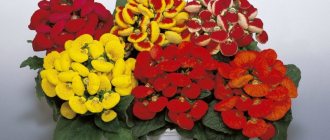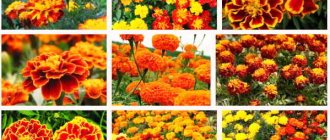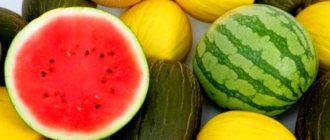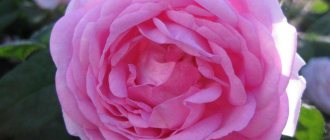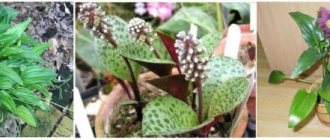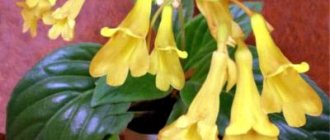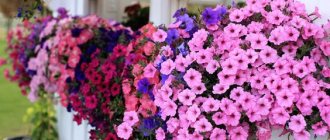Columnia care at home, pruning, propagation
Columneya is a perennial herbaceous plant belonging to the Gesneriaceae family.
Easy to care for, it has pubescent shoots and bright, delicate flowers. It is not uncommon to hear its second name – “goldfish” (based on the shape and color of the flowers). Young shoots of the plant stretch upward, but as they grow older, they begin to droop. The vines are quite fleshy, but fragile, reaching a length of 8-10 cm. The leaves are either oval or heart-shaped, with a smooth (glossy) surface with a sharp tip. In this case, the branches often have dense, light pubescence.
The length of the leaf plate is 4-10 cm. The flowers are located closer to the central part of the shoot, emerging from the base of the leaf axils. The petals are pink, orange or yellow. The flowering period occurs in winter or early spring, when it is summer in the southern hemisphere.
Columnea. Description, types and care of columnar
Columnea is a large genus of beautifully flowering, highly ornamental plants of the Gesneriaceae family.
The plant's homeland is the tropical forests of Central and South America, in particular Mexico, Panama, Guatemala, Costa Rica, etc.
Columnaea plants received their name in honor of the Italian botanist Fabio Colonna (1567 - 1640), from the Latin pronunciation of his surname.
Columnea is a perennial evergreen epiphytic and semi-epiphytic plant growing on the branches or trunks of trees.
Some species are shrubs and subshrubs, others grow as hanging, creeping or erect stems.
The leaves of Columnea grow on short petioles, opposite, ovoid in shape, pointed at the ends, shiny and leathery, smooth or pubescent, colored in various shades from dark green to bronze-purple, sometimes reddish on the underside.
The size of the leaves, depending on the type, is only 1.2 - 3.5 cm. Columnea flowers are very beautiful, tubular with a two-lipped limb, blooming in the axils of the leaves, and have a very bright color - red, orange, yellow, white. The fruit is a white berry. The seeds are dusty.
Due to their highly decorative properties, columnae are included in the collections of many botanical gardens. The plant is cultivated in the form of potted or hanging crops.
The Columnea genus includes about 200 plant species.
Possible difficulties
The leaves turn yellow and fall off. The stems become bare. Reasons: too dry air, low temperature, lack of lighting, too warm content. If the root ball is allowed to dry out in the summer.
There are light brown spots on the surface of the leaves. A possible cause is too cold water.
The tips of the leaves dry out and turn yellow. The reason is that the room temperature is too high and the humidity is too low. To solve this, try to spray the plant or install a humidifier.
The plant does not bloom. The reason is the unsuitable temperature during the formation of flower buds (16-18°C). During the period of flower bud formation (December - January), it is recommended to reduce the night temperature for 4 weeks.
Flowers turn brown and fall off prematurely. The reason is the possible contact of large drops of water on the flowers.
Gray rot. The reason is excess moisture.
Columnia types and varieties
There are a huge number of species and varieties of columna, but you can consider the most commonly used specimens for indoor cultivation.
Columnea Carnival - is characterized by a scattering of small dark green leaves, and during flowering periods, bright yellow flowers also appear, with a neat red border on the petals.
Allen's Columnae is a colorful herbaceous plant with deep red flowers. A distinctive feature is the fact that the shoots grow very quickly, creating long vines.
Columna Krakatoa - has dark green, small leaves and bright orange-red petals.
Blood-red columnea - distinguished by large leaves and thickened shoots. And the petals of the flowers, as the name implies, are red in color. In addition, on the reverse side of the leaves there are red spots (in the form of streaks).
Variety Columna Banks - on shoots up to one meter long, there are small light green leaves and orange-yellow flowers.
Columneya Slavnaya - the leaves of this variety are distinguished by their fleshiness and pubescent surface.
Columnea Shida - a clear difference from other species is the presence of reddish hair on the fleshy long shoots and on the back of the leaves.
The flowers located along the entire length of the shoots are yellow.
3.Varieties:
3.1. Columnea “Carnival”
The long stems of this species hang down in a beautiful cascade and are decorated with bright yellow flowers with red edges of the petals. The flowering is very abundant and long lasting, the plant looks gorgeous in a hanging basket or flowerpot. This variety easily tolerates the dryness of the home environment, but prefers regular watering.
↑ Up,
3.2. Glorious Columnea - Columnea gloriosa
A gorgeous hanging plant with red tubular flowers and flexible, long, branching shoots up to 90 cm long. The leaves are green, arranged in opposite pairs, densely pubescent. There are varieties with purple leaves, which contrast sharply with the scarlet flowers that appear in the leaf axils along the entire length of the stems.
↑ Up,
3.3. Column "Early bird"
A subspecies with delicate, green, glossy leaves and large tubular flowers. The petals of the flowers are colored red, while the flower tube is yellow. This variety blooms early.
↑ Up,
Columnea care at home
Columnaea loves bright but diffused light. During the flowering period, additional lighting may be needed. Since this plant does not tolerate direct sunlight and drafts, it is not recommended to take it outside (as well as place it on a balcony, veranda, etc.).
In summer, Columnaia feels comfortable at t = +23..+27°C. An option with higher temperatures is also possible, but under the only condition - increased air humidity. In winter, it is recommended to lower the room temperature to +16..+18°C, which will facilitate the active formation of new flower buds.
Violet or Saintpaulia is also a member of the Gesneriaceae family and requires proper maintenance when caring for it at home. You will find all the necessary growing recommendations in this article.
Conditions
Almost all types of columna do not require much attention from the gardener; it is enough just to provide it with the right conditions and care for the plant.
Temperature
Hybrid Columnea is a heat-loving plant that prefers moderate temperatures ranging from 23 to 27 degrees. In the summer season, when the heat is hot, it is not necessary to specifically lower the temperature, because the columnar tree can easily tolerate a short-term increase in temperature above 30.
Important! From mid-autumn, the plant should gradually be accustomed to lower temperatures.
If in summer the pot was on the balcony or in the garden, then with the beginning of autumn, when it is less than 15 degrees at night, it should be brought into the house, and taken out again during the day for a week. This will result in gradual acclimatization to room conditions. Then you need to lower the temperature to 16 degrees and keep the flower in such conditions until the beginning of spring.
Lighting
In nature, Columna grows on tall trees, thus receiving a large amount of light. In an apartment, such conditions can be created on a well-lit window sill in the southeastern or southwestern part. from direct sunlight , especially varieties with a smooth surface.
On a northern window or in the back of the house, in the absence of additional lighting, the flower will receive insufficient light, which will be manifested by a lack of flowering and excessively elongated shoots.
Air humidity
Increased humidity has a beneficial effect on the condition of the flower, creating an additional source of nutrition and improving gas exchange in the leaves.
Advice! The plant should be sprayed daily or every other day, using pre-settled water at room temperature.
It is useful to sometimes wash smooth-leaved varieties in the shower, washing away dust from them. It is better not to subject pubescent species to this procedure, or to dry them very thoroughly along the entire length of the trunks in a dark and warm room (no more than 2 times a year).
In winter, most species need a rest period after flowering. To do this, lower the ambient temperature, reduce watering and stop fertilizing. Lighting during this period is usually reduced naturally.
This video shows the Columna collection and talks about the features of caring for this plant.
Columna watering and air humidity
Air humidity is perhaps the most important condition for keeping this tropical vine at home. Therefore, to maintain the normal condition of the column, it is necessary to spray it daily or install an air humidifier. In addition, you can build artificial humidifiers: fill a wide tray with large pebbles, fill it with water and place a pot with a plant on top. In this case, the water level should not reach the bottom of the pot. Thus, natural evaporation of moisture will take place directly around the flower.
The water must be soft and free of lime, otherwise the plant will die. Adjust the frequency of watering as the top layer of soil dries, avoiding stagnation of water in the pan. Thanks to the drainage, the water in the pot will not stagnate, but it must be drained from the pan.
Aeschynanthus and Columnaea différance
Although Columnea and Eschynanthus are representatives of the Gesneriaceae family, they have peculiar differences. Columnaea flowers have the same color. Aeschynanthus, on the other hand, has a flower bed of one color, and the corolla itself is a different color. Eschynanthus is a rather beautiful evergreen plant. It, like Columna, comes from the tropics. It has a fairly large number of species and subspecies, up to 185.
Grows as vines and shrubs.
In home gardening, aeschynanthus is quite rare. This is because this flower is very picky when planted and grown at home.
But if you follow them with the greatest precision, then it can please you with its flowering. Of course, the flowering will be short-lived and not as intense as that of the columnar. But it's still worth it. It is usually grown in hanging pots.
The branches of Eschynanthus reach a length of up to 45 centimeters. The leaves are oval-oblong and fleshy, unlike columnea. Leathery, bright green and shiny, 4 to 10 centimeters long. There is this plant that looks like a bush.
There are also hybrids (these are subspecies) with variegated leaf colors. Color of Eschynanthus flowers: orange, bright red with a yellow or brown corolla. Of course, this plant is very similar to Columna. But there are still clear differences between these colors. Aeschynanthus does not reach such large sizes as columna. The flowers of Eschynanthus are also completely different. The upper petals are shorter and resemble a hood.
And in the columna, the flowers form a hood with petals protruding from it. But the biggest difference between these species is the fruit. Columnaea has fruits in the form of a berry filled with seeds. Aeschynanthus has fruits in the form of long boxes, reminiscent of a pod containing seeds. The leaves are also different. Columnaea's leaves, although oval-shaped, are more elongated than those of Eschynanthus. Even in Eschynanthus they are more leathery and fleshy.
Columnia propagation by cuttings
The simplest method of propagation for this plant is cuttings. Back in February-March, it is necessary to cut cuttings (from the tops, where the young shoots are), 6-7 cm long and leave no more than 4-5 leaves. Rooting is carried out in a moist substrate (universal soil with the addition of peat).
Caring for seedlings involves keeping them in a well-lit, warm place (+21°C...+24°C). In addition, it is necessary to water daily, only moderately (overmoistening is unacceptable).
As soon as a new pair of leaves grow, it means that rooting has been successful (new roots have formed), and now you can transplant the plant into a pot, to a permanent place.
Reproduction methods
Cuttings
Columna can be propagated most quickly and easily by cuttings. Cuttings are harvested in February or March; young stems are cut off for this purpose. The length of the segment should be 60–70 mm; remove all sheet plates from it except 4–5 pieces. For rooting, the cuttings are planted in a moist soil mixture consisting of a universal substrate and a small amount of peat. Before their roots grow, they are kept in a warm (21 to 24 degrees) and well-lit place. In addition, they need to be provided with systematic daily moderate watering, while avoiding stagnation of liquid in the soil mixture. You can find out that rooting was successful by the new pairs of leaf blades that appear on the cuttings. When this happens, the plants can be planted in individual pots, using a soil mixture that is suitable for growing columnae (see above).
Columnaea: propagation by cuttings
Propagation by seeds
Growing vines from seeds is a more complex and time-consuming task. If you nevertheless decide on such an experiment, then keep in mind that the seed material of the columna has low germination, and if the seedlings appear, most of them may die. Most often, only experienced gardeners are interested in seed propagation.
It is recommended to sow seeds in the last days of February, but it should be taken into account that the crops will need greenhouse conditions. Fill the container with a moistened soil mixture consisting of sand and peat, level its surface and evenly distribute the seeds on it. They are sprinkled with a thin layer of substrate on top, and the container is covered with film (glass). Crops need to be kept warm (from 23 to 25 degrees). Remember that they need to be ventilated every day, and moisten the soil mixture only if necessary. The first seedlings may appear 15–20 days after sowing. As soon as this happens, the container must be moved to a well-lit place, reliably protected from direct sunlight. If necessary, illuminate the seedlings with a fluorescent lamp. After 3 or 4 true leaf plates have formed on the seedlings, they will need to be picked into individual pots. There is no need to dive the column.
Columnia cultivation and seeds
There is another more labor-intensive process of reproduction - seed. The main disadvantage is the fact that not all seeds germinate and survive. Only experienced gardeners resort to this method.
Seeds are germinated only in greenhouse conditions. It is best to carry out the procedure approximately towards the end of February. The seeds are sown on the surface of a moistened substrate (a mixture of peat and sand), sprinkle a little soil on top and cover with film. The temperature of the greenhouse should be within +23...+25°C. Daily care consists of ventilating the greenhouse and moistening the substrate as needed.
The appearance of the first shoots is possible in 2-3 weeks. After which the young shoots need good lighting, but not direct sunlight. The best option would be to install a fluorescent lamp. As soon as the shoots acquire 3-4 leaves, they can be transplanted into pots. Columna picking is not carried out.
How to propagate Columna?
There are two ways to propagate the plant: cuttings and seeds.
Rooting cuttings
Cuttings are taken from an adult plant in early March. The procedure itself is carried out like this:
- Pieces 10 cm long with 5–6 leaves are cut from the tops of the stems.
- Cut wounds are sprinkled with charcoal powder.
- Prepare a mixture of peat and sand and plant cuttings in it. The ends are deepened by 1.5 cm. The soil is mulched and the seedlings are watered.
- Place in a place where the temperature can be maintained at 24 °C. Cover with film, having previously made holes in it for condensation to escape. Periodically open and water.
- When new leaves appear on the cuttings, they can be transferred to other pots.
Growing from seeds
Seeds are not used for home propagation . They germinate poorly, the sprouts are weak and die quickly. The process itself takes a lot of time. First, you need to soak the seeds in a solution of potassium permanganate, then plant them in moist soil, scattering them over the surface of the soil.
Sprinkled with soil mixture, the seeds are covered with film or glass, periodically watering and airing. Sprouts should appear in 3 weeks.
Diseases and pests
, gray rot may appear on the shoots and roots . If detected, you must act quickly without starting the process.
The entire affected area (if it is small) must be removed and replanted, treating the roots and the cut site with a fungicide. Before transplanting, check the roots; if there is a lesion there, then also remove the affected part. If the infection was detected at a late stage (completely affected roots), then healthy shoots are pruned into cuttings.
Columnia is sometimes attacked by aphids , scale insects , thrips and spider mites , which settle on the leaves and stems. Treatment consists of spraying with insecticides.
I liked the article! Rate it.
Questions have arisen regarding cultivation! Write in the comments.
Home care
Despite the fact that columna is a fairly unpretentious plant, it still requires care. For comfortable growth, you first need to choose the right place - the flower needs bright, diffused light, so it is better to place it on a windowsill on the east or west side.
Then you should take care of watering, temperature, fertilizers and other important points that contribute to the growth of a beautiful flower.
Temperature
Columnia by its nature is a heat-loving plant. Therefore, before looking for a place to grow it, you should take into account that there are no drafts there.
In the warm season, the optimal temperature for the column will be +18-20 degrees.
When the plant stops growing (at the onset of the dormant period), it is better to reduce the temperature to +10-12 degrees.
Typically this period occurs in the fall.
After a short winter, it is necessary to move the flower indoors to a warmer place.
A sign of such actions is the appearance of buds about 5 mm in size.
Illumination
Despite the fact that Columnaea prefers bright light, it can die from direct ultraviolet rays. Therefore, it is advisable to provide the plant with diffused lighting.
Important! You need to choose the optimal place on the windowsill, since in the back of the room the plant may suffer from lack of lighting.
Fertilizer
Columnia does not require constant feeding, but during the period of bud formation it requires fertilizers. The most useful during this period will be compositions based on calcium and phosphorus.
In addition, ordinary fertilizer mixtures are suitable, only the dosage should be half the amount indicated on the package. It is enough to feed the plant once a week.
Humidity and watering
It is at this moment that the capriciousness of the column is revealed. Since this plant is native to the tropics, it requires high humidity. Moreover, it is not advisable to simply spray the flower; it is better to create a water mist.
Columna should only be watered with purified water; it reacts painfully to ordinary liquid, because it contains a large amount of lime. When watering, water should be at room temperature.
Important! You need to water the flower much more in summer. During the cold season, the plant does not require abundant watering.
Transfer
There are many recipes for preparing soil for replanting. The main thing is that there is not a lot of lime in the composition.
Care
There are no great difficulties in caring for the Columna; it is not picky and responds well to the simplest but correct actions.
Watering
Watering the flower must be balanced so that the soil feels moist, but there is no stagnation of water. The water must be left in an open container for at least 24 hours at room temperature. By winter, watering is reduced to once a week .
View this post on Instagram
Posted by flowers_tanel (@flowers_tanel) Oct 4, 2021 at 11:53 am PDT
Feeding and fertilizers
Columna is fed at the beginning of spring once every 2 weeks . For feeding, take solutions of such products as “Kemira Lux” or “Fertika”.
The concentration of fertilizer in the solution should be 2 times less than indicated in the instructions. With an excess of nutrients, the plant grows leaves and stems, but does not bloom. In winter, feeding is not stopped, but done less frequently , about once a month.
Transfer
Transplantation is carried out a month before the growing season and a month after flowering. The new container should be 3–5 cm larger than the old one. The bottom of the pot is covered with a layer of drainage. You can use Saintpaulia soil as prepared soil , but add pieces of bark to it.
Columnea loves loose soil. When replanting, it is recommended to pinch the tops of the stems to encourage the growth of side shoots and create a beautiful appearance.
Important! To rejuvenate the columna, you need to do pruning to reduce the bushiness of the flower and make it neat.
Columnea: description and features of care at home
Columneya is a perennial epiphytic plant with bright flowers. Homeland - tropics in the south of America. In a normal environment, Columna grows on rotten tree trunks, in stone crevices, using them as a support, forming beautiful inflorescences. The stems are elastic, juicy, reaching 1-2 meters. The leaves are densely arranged, oval or heart-shaped, sometimes oblong. The flowers come in different colors and resemble fish or butterflies.
In the house it is spectacular in flowerpots and hanging pots.
In nature, this flower has approximately 200 species. Only a few of them are suitable for growing at home:
- Allena - has long thin shoots reaching seven meters. Scarlet flowers stand out in the lanceolate leaf.
- Banksa is a small trailing vine with small light green leaves and six-centimeter yellow-orange flowers.
- Carnival is a vine strewn with beautiful yellow buds with a red border, reminiscent of a carnival, and small dark green leaves. This variety blooms almost all year round.
- Krakatoa is named like a volcano because its fiery-hued flowers erupt from dark green, sharp leaves.
- Blood red is a semi-shrub variety with long thickened shoots and rough oblong leaves. It is distinguished by the presence of red spots on the back of the leaf. It blooms for a long time and abundantly with red buds.
- Sharp - a species for experienced gardeners, thick shoots lie or droop, leaves are small and sharp. The color is orange-red with yellow patches at the base.
- Glorious - the stems are covered with dark green oblong leaves and red-orange flowers.
- Shida or Sheidiana - a fleshy vine that can reach 1.5 meters in length, with red hair characteristic of this variety on the stems and leaves. Throughout the tree, in the axils of the leaves, there are numerous yellow flowers with reddish spots.
Types of columna with photos and names
Looking at the Columnaea flower, photo and description, you can clearly see its unique beauty. Considering that there are many species of this plant, we will constantly be surprised by their exotic appearance. Among them there are many hanging species , but there are also those that look like bushes.
Carnival
A cascade of long stems covered with dense foliage and a multitude of bright yellow flowers of a bizarre shape are all decorative delights of the Carnival species.
Columnea carnival is resistant to slightly dry air, it always blooms abundantly and for a long time.
Ecuadorian
This type of columna has erect stems, covered with lignified bark. The color of the leaves attracts attention: a dark green plate, the tip of which shines scarlet. The flowers are small, yellow, and after flowering they produce lavender berries.
Medical
This variety is characterized by large leaves arranged in the form of a fan. These leaves are very similar to green bird feathers, decorated with red tips. The flowers are yellow, located at the base of the leaves.
Purpureovittata
Columnea pupureovittata has unusual leaves. The large (up to 15 cm) dark green foliage is not smooth, but pubescent and wrinkled. Flower petals can be colored yellow or dark burgundy.
Allen
A distinctive feature of Allen's Columnae is the length of the stems, reaching several meters. Along their entire length they are strewn with small, up to 2 cm, leaves. The red petals of the flowers are elongated and pointed at the ends.
Krakatoa
It is no coincidence that this variety was named after the volcano, because its stems rise above the roots, and the Krakatoa columna resembles a lava eruption.
The leaves are not wide, but long, with a smooth surface and a pleasant green color. Since Columna is a hybrid, its flowers are colored in various shades of red and are identical in size to the leaves.
Leman
A compact variety of columnea with thick green leaves covered with fine hair. The central vein of the upper leaf blade is drawn into the leaf. Small orange flowers are located under the leaves.
Minutiflora
A species with straight stems and large leaves with clearly visible veins. The flower petals are yellow-orange, the corollas themselves are small and hidden under the foliage.
Khirsuta
The leaves of the khirsuta are covered with stiff hairs. The flowers are large (up to 5 cm), star-shaped, the petals are yellow and red.
Linear
Semi-shrub species with straight half-meter stems. The leaves are long (up to 12 cm), with a glossy surface. The flowers are dominated by pink shades, the petals are covered with a white edge.
Ciliata
It differs from its “friends” in the family in the tubular shape of the flowers and their purple tone, which is similar to the color of the lower leaf plate.
Small-leaved
Small-leaved columnea has long hanging stems with small leaves (up to 1 cm). The surface of the leaves is covered with red fibers. The color scheme of the petals is red with orange stripes.
Acute, or Arguta
The acute columna, the photo of which you see, has long stems (up to 1.5 m) with a dense edge. The leaves are pointed, small, glossy. Arguta has large flowers located in the axils of the leaves.
Arguta flowers vary in color from red to orange. Yellow dots or spots are clearly visible on their petals.
Raymond
Raymonda is a bushy species with erect stems. The leaves are long, dark marsh color. Red flowers have a yellow throat.
Majestic
An ampelous appearance with small velvety leaves and large red-yellow flowers. Flower petals are much longer than the leaves of the plant.
Thickleaf
Stems of thick-leaved columnea are straight. As they age, they gain weight and lose weight.
The leaves are smooth, green, stretch up to 10 cm in length. Coral flowers have a red edge and reach the same size as the leaves.
Variegated
It boasts variegated leaves with a green core and white patterns on the edges. The classically shaped flowers shine red.
Blood red
Columnea red is the most exotic species. It has thick stems that grow upward and are collected into a subshrub. The leaves are oval, large, arranged in alternate order. The light green leaves are diluted with burgundy spots without a specific shape. The flowers are pubescent, bright scarlet in color.
Glorious, or Gloriosa
Gloriosa has long and thick stems that spread along the ground. The leaves can be green or red-brown, oval-round in shape. Carmine-red flowers are decorated with yellow spots located at the base of the tube.
Banks
Banksa shoots are lignified and long (up to 1 meter). The leaves are arranged in pairs, lanceolate. The surface is smooth, painted in rich green tones. The flowers are large (up to 5 cm), orange-red.
Sheidiana
Columnea sheidiana surprises with its leaves, which are pubescent with white fibers on the outside and red on the bottom. The corollas are large, yellow with large burgundy spots. Columna Schiedeana came to Europe from the tropical forests of Mexico.
Columnea shida
The stems of Columna shida look like long vines, strewn with red fibers. The leaves of the plant also have red pubescence, their shape is lanceolate, up to 10 cm long. The flowers are yellow.
Consanguina
The species is native to South America and belongs to the shrubs. Its stem does not branch and reaches a height of 1.5 m. A distinctive feature of consanguina is the location and size of the leaves.
In a pair of leaves, one is much smaller than the other, which looks like an alternate arrangement, but in fact they grow along the stem. The flowers have pale yellow petals and a green calyx.
In addition to the described species, two interesting varieties should be mentioned : Lava flow and Early bird . They have very beautiful, bright orange and red flowers.
Home care
The home flower Columnaea is unpretentious; growing it is not difficult if you follow several rules:
- Carefully choose a place, maintain certain temperature, humidity and lighting, depending on the season;
- Choose the right soil composition and pot;
- Fertilize;
- Observe the watering regime;
- Trim the bush in time.
Location in the house, lighting, temperature, humidity
| Season | Location | Temperature | Lighting | Humidity |
| Spring | A bright, warm place, protected from direct sunlight. | +18-+22ºС. | Bright, but diffuse. | Daily spraying with warm water +25-+30ºС. |
| Summer | Window facing west or east. | +20-+27ºС. | From all sides, but not straight. | High air humidity is required. It is good to place the plant near a home fountain or aquarium. Take a shower once a week. |
| Autumn (October-November) | Cool, no drafts. | During the day - +16ºС, at night - +8-+12ºС | Bright, diffused. | Spray once a week. |
| Winter | South windows. | +15ºС for a month or 50 days, then an increase in temperature. | Provide light for twelve hours using a phytolamp for plants. | Spray once a week. When flowering, try not to get on the flowers. |
Soil, planting container
The plant needs nutritious soil. Its composition:
- leaf humus - two parts;
- turf land - four parts;
- compost - one part (you can use peat with vermiculite for looseness);
- fine sawdust (charcoal), sphagnum moss - one part.
You can also use ready-made subtracts: soil for Saintpaulias (epiphytes), soil for flowering ones.
The container needs to be shallow, but wide, with good drainage. For example, a hanging basket or flowerpot.
Fertilizer
Feeding is very important:
- In the spring-summer period - every two weeks with mineral fertilizer for flowering indoor plants, diluted with water;
- In autumn/winter - once a month is enough;
- At the end of winter - once a week.
Good to use: “Kemira Lux”, “Buyskiye Fertilizers”, “AVA”, “Fertika Lux”.
The fertilizer should be diluted using half the dose specified in the instructions.
Watering
Filtered water must be used, since the lime content in flowing water is detrimental to columna. Temperature +20-+25ºС.
Watering is needed abundantly, but water should not be allowed to stand in the soil. To avoid this, you need to loosen the soil and let it dry.
Watering frequency: autumn/winter - careful; in summer/spring - frequent.
Trimming
To rejuvenate the plant, annual pruning is used after the flowering period. The shoots are cut to half their length (a little less is possible). It is also necessary to constantly rid the plant of dried parts (flowers, leaves, shoots).
Transfer
Having bought a flower, after two to three weeks, after adaptation, it should be transplanted into nutritious soil. For this:
- Take a pot 2-3 cm larger, place expanded clay or small stones on the bottom for drainage;
- The earth is poured back one or two centimeters from the edge;
- The vines are cut to a length of about 15 centimeters, a little less (cut shoots are used as propagation material);
- The flower is freed from the ground, the roots are washed with a stream of water at room temperature;
- The roots are examined, removing defective ones. The wounds are smeared with green paint;
- Holes are made at the edges of the container, vine shoots are pulled through them, and they are covered with soil. It is good to plant two or three seedlings in one pot to make the bush full;
- Watered.
Growing a flower
After rooting, the plant is planted; to prepare the substrate, turf, peat, sand and leaf soil are mixed in a ratio of 1:1:1:2.
The soil should be sufficiently loose and permeable; every year or two the flower is transplanted into larger containers.
Over the course of a year, shoots can grow up to 50 cm; in order to prevent leaves from falling off, it is recommended to periodically cut them off, which stimulates the process of formation of flowers and new shoots. After spring flowering, the shoots need to be pruned by about 1/3; fading flowers, weakened and dry shoots should be periodically removed, damaged ones should be cut off at the base.
We talk about caring for and growing Camellia at home, the types of luxurious flowers. We are discussing https://floradoma.com/komnatnyie-rasteniya/kodieum-uhod-v-domashnih-usloviyah.html what kind of care a bright Kodieum needs at home.
Reproduction
Indoor columnar can be propagated in two ways:
- cuttings;
- seeds.
Cuttings
Simple and convenient method. After pruning the plant, the resulting shoots with two to three pairs of leaves are used as propagation material. The cuttings are rooted in water or nutritious peat. The seedlings are kept in a bright place at room temperature. Water daily without over-watering. To maintain moisture and heat, it is good to keep them under a glass cover. If new leaves have appeared, the plant has taken root, you can plant it in a flowerpot.
Propagation from seeds
A difficult, rarely positive way. Used by experienced breeders. The seeds are planted in sandy-peaty soil, covered with a glass or film cover, placed in a warm room with constant temperature and humidity, ventilated and watered. After a week or three, when shoots appear, the containers are placed in the light, but protected from direct sun. When several pairs of leaves grow, you need to transplant the seedlings into small pots.
Columna propagation techniques
This representative of tropical plants is recommended to be propagated in the spring. The procedure is performed using 2 methods - seeds and cuttings.
Cuttings
Cuttings are the most affordable way to propagate Columna at home.
This is largely due to the fact that the plant takes root very quickly and rapidly increases its landscaping.
The algorithm for this type of reproduction can be presented as follows:
- Separation of the apical parts of shoots about 5 cm long.
- Removing leaves along the entire length except the crown - only the top pair should remain.
- The cut needs to be treated with a rooting stimulator, for example, root and placed in water.
- After 2-3 weeks, enough roots will be formed on the cutting for planting.
- Planting of cuttings is carried out in a fairly wide container with drainage and the use of appropriate soil.
- The container should be placed in a sunny place, providing sufficient shading from direct exposure to rays.
Cuttings need to be planted several pieces in one container, placing them along the edge.
Seed propagation
The method of propagating columna by seed, in the absence of material for sowing, requires the grower to have certain skills and dexterity.
Difficulties are present due to the fact that this plant is not self-pollinating, and its natural pollinators are moths and hummingbirds.
To obtain seeds, you must perform the following list of actions:
- During the flowering period, it is necessary to transfer pollen from the stamens of one bush to the pistils of another using a soft brush.
- Upon completion of flowering, fruits will form on the plant. They are considered mature when they become soft and the color turns white.
- The ripe fruit must be cut into 2 parts and the pulp removed from it. It should be spread evenly on white paper and left to dry.
- When the material has already dried, it will be possible to collect seeds from the leaf and use them for their intended purpose.
Reference!
This technique is usually used by botanists and breeders in order to preserve especially valuable varieties or obtain new hybrids.
Sowing, regardless of the source of seeds, is carried out in this way:
- Loose peat-based soil is prepared.
- It must be poured into a low but wide container.
- Seeds should be placed on the surface of the soil without being buried.
- The seeds and surface are moistened using a spray bottle.
- The container must be covered with plastic or cling film (remove when seedlings appear).
- When young columnae grow to 1-2 cm, they need to be picked and planted in separate vessels.
Further maintenance, until the development of a full-fledged plant, requires high humidity. This factor is ensured by a tray with wet expanded clay.




